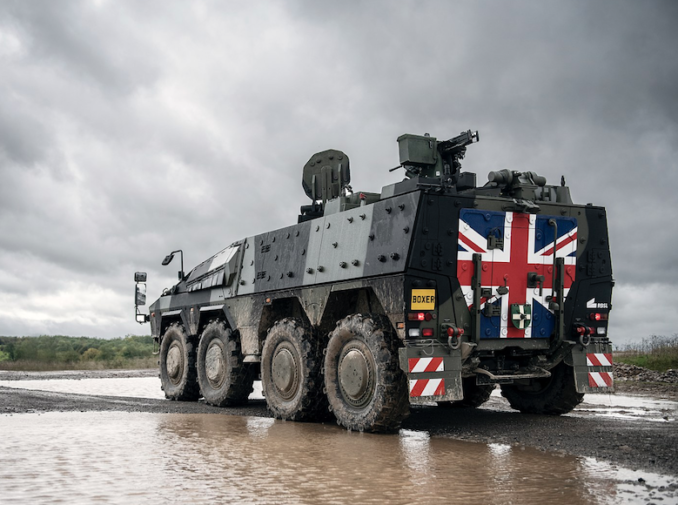General Sir Nick Carter, former Chief of the Defence Staff of the United Kingdom between 2018 and 2021, championed a strategic concept known as ‘Strike’ as part of his vision for modernising the British Army. This strategy was built on the principles of hybrid warfare, emphasising agility, rapid deployment, and the integration of cyber, electronic, and conventional forces to counter emerging threats. The ‘Strike’ concept aimed to make the British Army more adaptable to modern conflict environments, particularly in an era where state and non-state adversaries employ a mix of conventional, irregular, and cyber warfare tactics.
The Strike Concept and Hybrid Warfare
The ‘Strike’ strategy emerged from Carter’s recognition that future conflicts would be characterized by multi-domain operations, where the battlefield extends beyond land warfare to include cyber, space, and information warfare. Hybrid threats posed by adversaries such as Russia and China require forces to be more dispersed, resilient, and technologically advanced. The strategy sought to break away from the traditional reliance on heavy armour and static brigades in favour of more flexible, rapidly deployable forces.
At the heart of the ‘Strike’ concept was the creation of ‘Strike Brigades,’ intended to operate at high speed over extended distances with sufficient firepower and protection to engage in sustained combat. These brigades were designed to be equipped with new-generation wheeled armoured vehicles, emphasizing mobility over the heavy protection of traditional tracked armour. The aim was to project force rapidly across a battlefield without being dependent on heavy logistics chains, a concept inspired by NATO’s push for rapid reaction forces in response to Russian aggression in Eastern Europe.
Impact on Armored Vehicle Procurement
The Strike strategy led to significant changes in the procurement and modernization of the British Army’s armoured vehicle fleet. Historically, the Army had relied on a mix of tracked armoured vehicles, such as the Challenger 2 Main Battle Tank and the Warrior Infantry Fighting Vehicle. However, under Carter’s vision, procurement focused on wheeled platforms, particularly the Boxer Mechanized Infantry Vehicle.

A United Kingdom MCV-80 Infantry Combat Vehicle,
Unknown photographer – Public domain
The Warrior Infantry Fighting Vehicle, which had been in service since the 1980s, was originally planned to undergo an upgrade under the Warrior Capability Sustainment Programme (WCSP). This upgrade included a new turret with a 40mm cannon and enhanced protection. However, the Strike concept deprioritized heavily armoured tracked vehicles like Warrior in favour of more mobile platforms. In 2021, the UK government cancelled the WCSP, signalling a shift away from traditional heavy infantry fighting vehicles.

2019 Army Combat Power Demonstration (ACPD),
Jack Eckersley – Public domain
The British Army invested heavily in the Boxer Mechanized Infantry Vehicle (MIV), a wheeled armored personnel carrier designed to provide mobility and modular capabilities. Boxer’s selection aligned with the Strike strategy’s emphasis on deployability, offering speed and adaptability over traditional tracked IFVs.The UK placed an order for over 600 Boxer vehicles, intending to equip Strike Brigades with this highly mobile platform.

The new Ajax prototype,
Andrew Linnett – Public domain
The Ajax armoured vehicle programme, intended to provide reconnaissance and support to Strike Brigades, suffered from numerous delays and technical issues. Despite its troubled development, Ajax was supposed to complement Boxer by offering reconnaissance and fire support while maintaining high-speed manoeuvrability.
The Ukraine War and the Unraveling of the Strike Policy
The outbreak of the Russia-Ukraine war in 2022 profoundly challenged the assumptions underpinning the Strike concept. The conflict highlighted the enduring relevance of heavy armour, tracked vehicles, and traditional combined arms warfare. Several key lessons from Ukraine have exposed the flaws in Carter’s vision.
The Ukraine war has demonstrated that heavily armoured tracked vehicles, such as main battle tanks and IFVs, remain essential in high-intensity conflicts. Ukrainian forces have relied heavily on Western-supplied tanks (Leopard 2, Challenger 2, and M1 Abrams) and heavily armoured IFVs (such as Bradley and CV90) to withstand Russian artillery and drone attacks. This contradicts the Strike concept’s emphasis on lighter, wheeled platforms, which have struggled in contested environments.
The Boxer MIV, while offering high mobility, lacks the same level of protection as tracked IFVs in heavily contested battle zones. Ukraine’s experience has shown that wheeled vehicles, while effective in certain scenarios, are vulnerable to artillery, mines, and drone strikes in a high-intensity war. This raises concerns about whether the British Army’s decision to prioritize Boxer over Warrior was a miscalculation.
The Strike strategy assumed that rapid mobility would provide a strategic advantage, but Ukraine has demonstrated that logistics and sustainment are just as critical. Heavy armour, despite its logistical challenges, has proven essential for holding ground and sustaining offensive operations. The cancellation of the Warrior IFV upgrade left the British Army without a modern tracked infantry fighting vehicle, a gap that has become more glaring in light of Ukraine’s battlefield experiences.
Ukraine has reinforced the importance of combined arms warfare, where tanks, IFVs, artillery, drones, and infantry operate in coordination. The British Army’s shift towards Strike Brigades equipped primarily with Boxer and Ajax may limit its ability to conduct effective combined arms operations in high-intensity conflicts.
Policy Revisions and Future Considerations
The war in Ukraine has forced a reassessment of the British Army’s modernization plans. There are indications that the UK may need to rebalance its force structure by reintroducing heavier armoured formations alongside Strike capabilities.
With the Warrior upgrade cancelled, the British Army may need to consider procuring a modern tracked IFV to complement Boxer. Options could include purchasing existing IFVs from allied nations (e.g., CV90) or developing a new platform.
The viability of Strike Brigades as a core concept is under scrutiny, as the conflict in Ukraine suggests that highly mobile, lightly armoured forces are insufficient in peer-on-peer warfare. A hybrid approach integrating elements of Strike with more traditional armoured formations may be required.
The proliferation of drones and loitering munitions in Ukraine underscores the need for improved air defence and counter-UAV capabilities. This may necessitate additional investments in air defence systems, electronic warfare, and active protection systems for both tracked and wheeled vehicles.
Conclusion
General Sir Nick Carter’s Strike strategy was conceived as a response to evolving threats, emphasising mobility, rapid deployment, and hybrid warfare principles. However, the policy led to procurement decisions that deprioritized heavy armour in favour of wheeled vehicles like Boxer, while cancelling the modernization of legacy tracked platforms such as Warrior.
The war in Ukraine has fundamentally challenged the assumptions underpinning Strike, demonstrating the continued relevance of heavy armour, combined arms warfare, and robust logistics. As a result, the British Army is now faced with the task of reassessing its force structure and procurement priorities to ensure it remains capable of meeting the demands of future high-intensity conflicts.
© Always Worth Saying 2025



